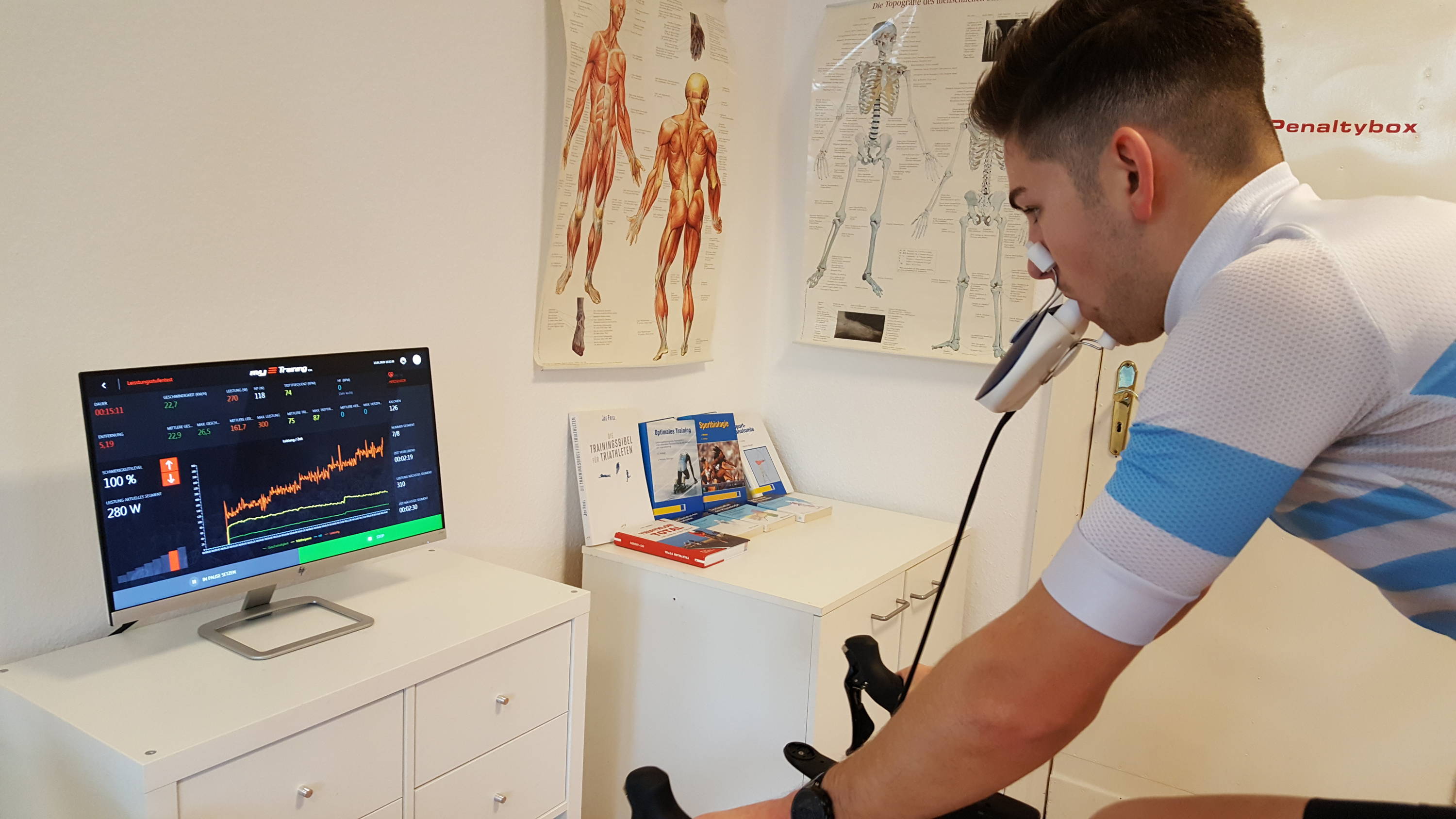Anaerobe Schwelle, Steady-State, fixe 4mmol-Schwelle, individuelle Schwelle, Dickhuth-Schwelle, … triathlon.de räumt auf mit dem Begriffs-Wirr-Warr und erklären die sportwissenschaftlichen Hintergründe der Laktatschwellen.
Laktat im Gleichgewicht
Die anaerobe Schwelle wird durch die Messung von Laktat bei einer Leistungsdiagnostik bestimmt. Sie soll zeigen, wo die Dauerleistungsgrenze eines Sportlers liegt und dient als Grundlage für die Ermittlung von individuellen Trainingsbereichen. Die Dauerleistungsgrenze eines Sportlers liegt an dem Punkt, an dem sich im Körper gerade noch ein Fließgleichgewicht zwischen Laktatbildung und -abbau einstellt. Dieser Punkt wird auch als maximales Laktat-Steady-State (MaxLASS) bezeichnet.
Aufwendige Messung?
Wer das MaxLASS exakt bestimmen möchte, muss allerdings mehrere Dauerbelastungstests im Bereich seiner Schwellenleistung durchführen, um zu messen, bei welcher Belastungshöhe die Laktatwerte nach einem anfänglichen Anstieg noch stabil bleiben und ab wann das Laktat über die Belastungsdauer (30min) immer weiter ansteigt. Die Bestimmung des MaxLASS ist also sehr aufwendig und zeitintensiv.
4mmol ist Durchschnitt?
Die Sportwissenschaft weiß sich jedoch zu helfen und hat in Studien einfachere Möglichkeiten entwickelt, dass MaxLASS zumindest annähernd zu bestimmen. Zunächst wurde durch Mader im Jahr 1976 die 4mmol-Schwelle entwickelt. In einer Studie fand Mader heraus, dass bei einem Stufentest auf dem Laufband (Stufendauer: 5 min / Stufenhöhe: 0,4 m/s) die Leistung bei einem Laktatwert von 4mmol im Mittel dem MaxLASS der Sportler entsprach.
Individuell ist besser?
In der Trainingspraxis wurde jedoch festgestellt, dass die fixe 4mmol-Schwelle nur für Sportler mit geringer Ausdauerleistungsfähigkeit passte. Aus diesem Grund wurden zahlreiche individuelle Schwellenkonzept entwickelt. Diese individuellen Schwellen werden über ein bestimmtes mathematisches Verfahren bestimmt und sollen das MaxLASS individuell besser wiederspiegeln. Zu den individuellen Schwellenkonzepten gehören u.a. die Schwelle nach Keul (Bestimmung über eine Tangentensteigung an der Laktat-Leistungskurve), die Schwelle nach Stegmann (Bestimmung über die maximale Abbaurate des Laktats in der Nachbelastungsphase) und die Schwelle nach Dickhuth (Bestimmung über den ersten Laktatanstieg + 1,5mmol/l).
Testbedingungen sind entscheidend?
Welches Laktatschwellenkonzept das Beste ist, lässt sich nicht eindeutig beantworten. Individuelle Faktoren wie Ausdauerleistungsvermögen, Zusammensetzung der Muskulatur und Sportart können eine Rolle spielen, welches Schwellenkonzept für einen Sportler am besten geeignet ist. Zusätzlich spielt es eine große Rolle, welches Stufenprotokoll bei der Leistungsdiagnostik angewendet wird. Eine längere Stufendauer oder ein schneller Belastungsanstieg können zu völlig anderen Ergebnissen führen. Bei einem Re-Test sollte also immer darauf geachtet werden, dass die Testbedingungen identisch sind.
Noch mehr Begriffe?
Um den Begriff-Wirr-Warr um die Laktatschwellen noch weiter zu vergrößern, findet man in der anglo-amerikanischen Literatur noch weitere Begriffe wie Onset of Blood Lactat Accumulation (OBLA) oder Lactate turnpoint (LT). Im Grunde verhält es sich aber mit diesen Begriffen ähnlich wie mit den oben beschriebenen Laktatschwellenkonzepten.
Einen anderen Hintergrund hat jedoch der Begriff respiratorische Schwelle, die über die Messung von Atemgasen bei einer Spiroergometrie bestimmt wird.
Fazit?
Hinter der Laktatschwelle steckt ein komplexes sportwissenschaftlichen Wissen. Die Kenntnisse und Erfahrungen eines Experten sind sehr wichtig, um aus einer Laktatdiagnostik aussagekräftige Ergebnisse zum aktuellen Leistungsvermögen und optimale Hinweise für das Training zu erhalten.




















